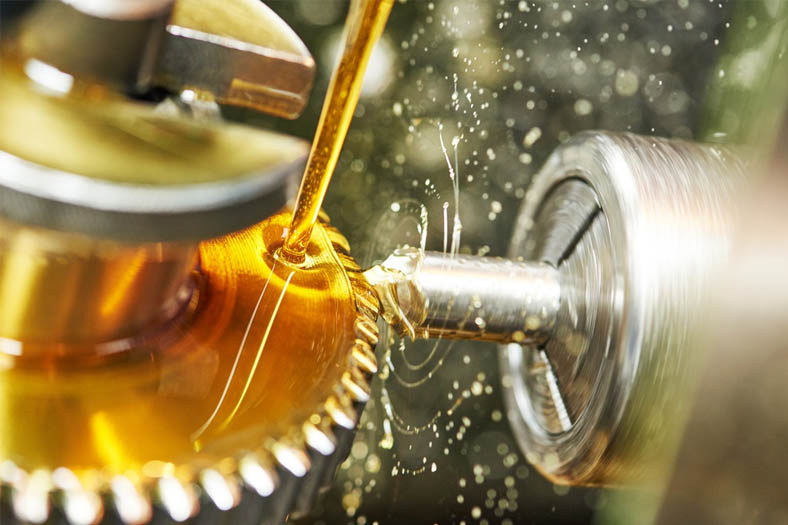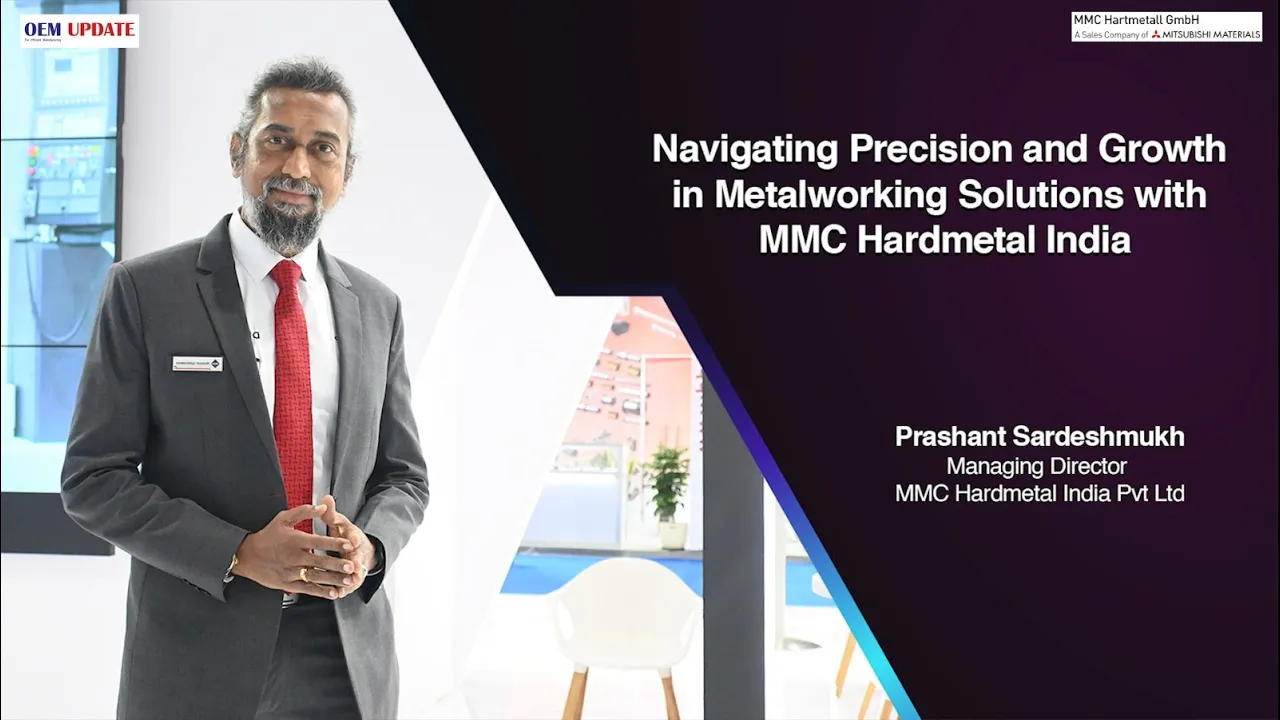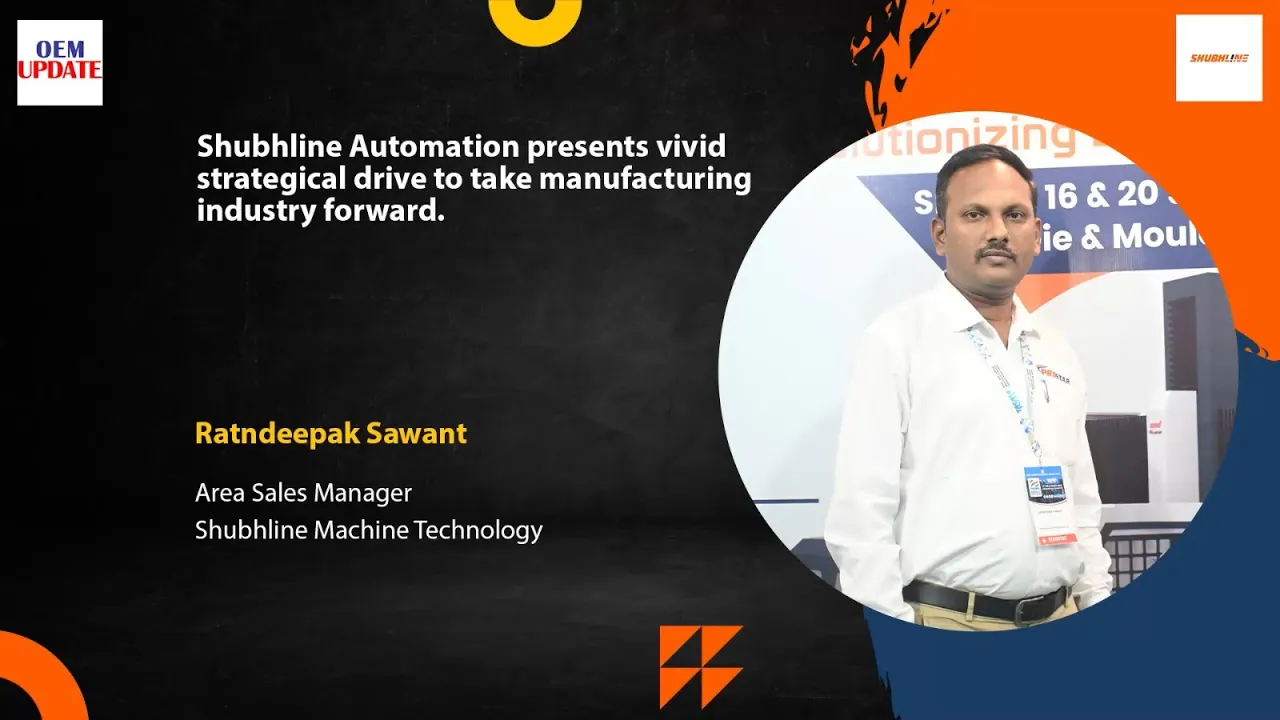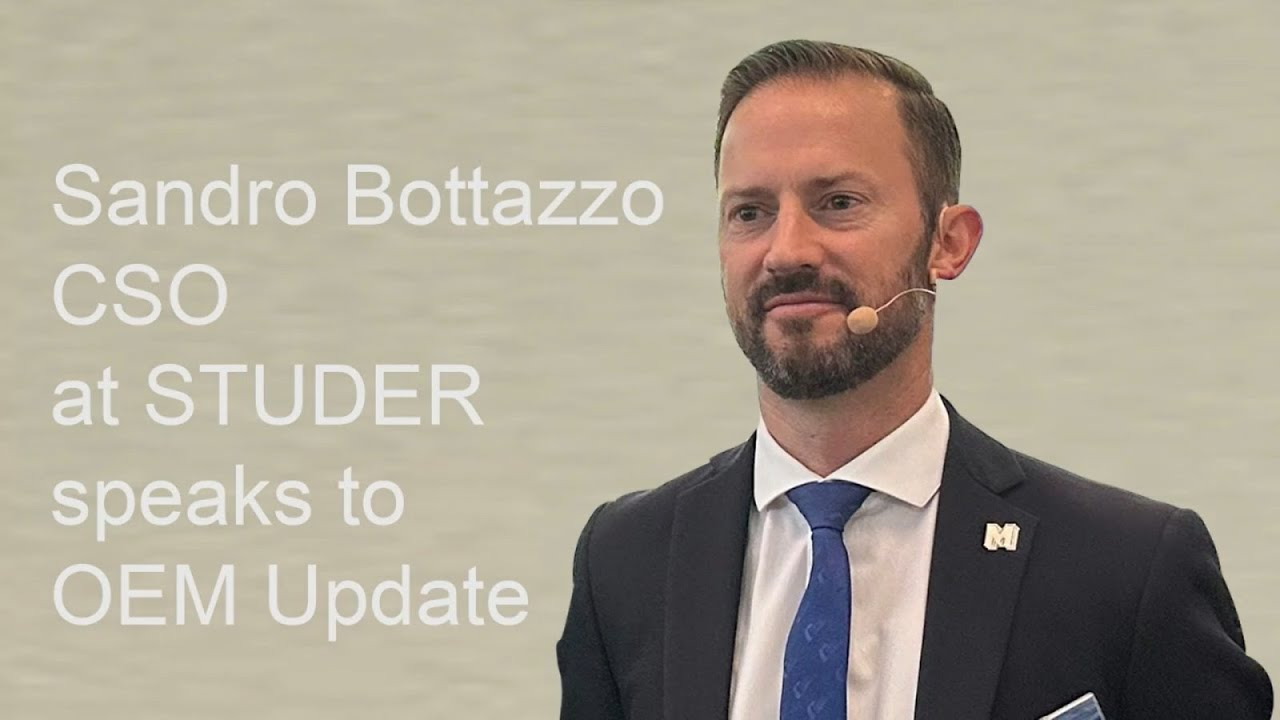Manufacturing resurgence unveils plethora of opportunities
By OEM Update Editorial January 3, 2022 5:15 pm IST
The industry speaks vibrantly, manufacturers are upskilling the workforce , strategizing digital technologies, and ‘Atma Nirbharta’ is trending to create India as a global manufacturing hub.
The year 2022 stands to deliver innovative solutions and strategies to power the manufacturing industry for years ahead. Manufacturing outlook seems to acknowledge abundant prospects emerging out of the slain period businesses went through the corona agony, globally. With businesses showing signs of gradual recovery, we all must be anxious to know about what the year 2022 has in store for manufacturing. The manufacturing industry is experiencing a resurgence. With inflation, supply chain disruptions and workforce shortage marred fulfilling orders for more than 18 months and that will be continuing into the New Year. Though positive, manufacturers are more uncertain about their future than ever. SME sector manufacturers especially feel the pinch of rising costs and automation needs, implementation of Industry 4.0 challenges as well as emerging skilled labour needs than ever. The manufacturing industry is increasingly using the IIoT; machine sensor innovation is being utilised to collect significant amounts of information. Improving operational efficiency is the crux. Digital infusion is accelerating as manufacturers get ready for operations to be in sync with the competitive landscape. Industry 4.0/ I 5.0, AI, robotics and machine learning and other aspects are becoming a business strategy, implementing the Internet of Things machines. Atmanirbharta is inducing production domestically; manufacturers feel vibrant and resilient to capitalise on Make in India, Make for World. So, take a look at what industry players from different sectors reveal about what to watch for in the coming year unveiling manufacturing outlook gaining momentum.
Auto Industry
The Indian Forging Industry is currently going through a difficult phase. The sector is always confronted with new challenges. The industry is largely concerned about the lack of semiconductor chips, which has also had an impact on exports. In addition, the increase in steel prices has harmed the Indian forging industry. It is the most important requirement in the forging sector and the current price increase has disrupted the supply chain. The advent of ‘Electric Vehicles’ will also have a direct impact on the forging sector, as it will reduce demand for moveable parts used in vehicles, resulting in significant unutilized forging capacity. However, the industry continues to support our government’s green initiatives. Furthermore, we are optimistic about 2022, anticipating that the semiconductor shortage would be resolved by the second or third quarter of 2022. – Vikas Bajaj, President, Association of Indian Forging Industry.
From an industry perspective, 2021 has been a challenging year. The uncertain turn of events due the pandemic resulted in disruptions in the global supply chain, leading to an extended period of shutdowns, material and labour shortages, and higher costs beyond forecasted expectations. With economic revival happening gradually and strong support from the Government of India for driving manufacturing growth through initiatives such as: Make in India and Atmanirbhar Bharat, PLI scheme, increase in FDI, push for developing industrial corridors and smart cities, we are hopeful that 2022 will witness a strong revival and upward trend in business performance. – Ashwath Ram, Managing Director, Cummins India Limited.
Association of Skill Development Council
Manufacturers are continuously striving to improve processes and identify efficiencies, and manufacturing trends in 2021 will strive toward these goals. While Implementing IOT, We can gather enough data from Machines, Robots and Automation Systems. New Job Role Opportunities have been created like Automotive Data Analyst in Manufacturing, Service and Dealers. Automation is also vital in helping manufacturers compensate for a worker shortage and eliminate time consuming and error-prone processes — from the plant floor to the back office. Technologies like AI, machine learning, and smart machines can improve decision making, quality, consistency, and uptime. – Uzair Hasim Shafiul, Industry Expert- Manufacturing, R&D, ASDC
Indian Machine Tools Manufacturers Association
Manufacturing sector has been doing well on the back of several reforms initiated in the recent past which has been reflected in the machine tool industry’s increase in consumption in 2021 as against 2020. India’s manufacturing PMI (Purchasing Managers Index) hit a 10 month high in November 2021. According to data released by IHS Markit, PMI rose from 55.9 in October to 57.6 in November. With pickup in demand companies are increasing their production volumes. In 2022 we expect the imbalances wrought by the pandemic to be resolved and the business cycle comes back to normal routine. – V. Anbu, Director General & CEO, IMTMA and BIEC.
Increased deployment of automation viz., material handling automation, warehousing automation, process and data automation and increased extent of responsiveness in manufacturing with quick changeover is seen advancing. Also, customised products will prevail. Besides, synergy of man with machines and predictive and adaptive improvements/ corrections in manufacturing process will emerge with increasing technology adoption. Machine tools will have to adapt to the production system or operative in the interest of optimisation. The onus of generating process data for effecting learning and active control shall lie with the machine tool. – Avinash Khare, Head-IMTMA Technology Centre, Pune.
India’s economy is set to accelerate with the services sector in full swing and manufacturing activities gaining momentum. The International Monetary Fund (IMF) has projected India’s economy to grow at 9.5% in 2021-22. Manufacturing sector’s PMI (purchasing manager’s index) rose from 55.9 in October to 57.6 in November 2021, signalling one of the strongest improvements in the health of the manufacturing sector, according to IHS Markit India. Larger outlays in various sectors of manufacturing and a corporate tax which is the lowest in the world will be the growth drivers and ensure ease of doing business in India. In 2022 we expect the imbalances brought about by the global pandemic to be resolved and the business cycle to normalise further. – Rajashekara H V Advisor and Head IMTMA Design Institute.
Automation
The manufacturing sector, post pandemic, is on a path of a V-shaped recovery led by sectors like FMCG, automobiles (including EVs), pharmaceuticals, iron & steel, and cement. With initiatives like Make in India drive and National manufacturing Council, India is on a path of becoming the hub for hi-tech manufacturing too as evident by the investment in setting up manufacturing plants by global giants in the country. With rising consideration towards developing smart cities, EV vehicle production and infrastructure and industrial corridors, one can expect a strong movement which will provide impetus to industrial development leading to more technological advancement in the manufacturing sector. I would also like to highlight the delivery challenge created by the worldwide post pandemic semiconductor and resin shortage. This is an unprecedented situation on a global level and so it might impact the growth of the sector in India too in 2022. – Sameer Gandhi, Managing Director, OMRON Automation, India.
Surface coating
On one hand, the year 2021 saw the disastrous second wave of Covid and on the other, a never-before optimistic growth in the manufacturing sectors. We have already seen Manufacturing has emerged as one of the high growth sectors in India during the same period. We all know the potential this country has to become a global manufacturing hub by 2030. With the rising new edge technologies, tech driven business offering, changing geopolitical equations, the overall economic scenario in the country should remain positive and huge domestic demand fueled by the world’s largest middle-class population will keep India’s growth story thriving. All in all, I am sure that India is well positioned to attract foreign investments and government’s various initiatives like PLI Schemes, high focus on infrastructure developments of roads, railways, metro, airports and urbanisation-smart cities etc., also modernization of defence and aero industry to promote local manufacturing will surely boost the entire manufacturing sector. – Pravin Shirse Managing Director, Oerlikon India.
Die and mould
I expect the manufacturing to undergo rapid change to ‘Smart’ manufacturing. The customer expects the machine tool to be Industry 4.0 compliant. The IT infrastructure in the manufacturing plant would undergo modernisation. More jobs would be created for IT professionals in the manufacturing industry. I am sure we will be able to see all these modern gadgets at IMTEX 22. Apart from this, I hope to see manufacturing technology for the Electronics industry as the Government has announced PLI schemes for chip and other electronics components. Secondly the sectors like defence, Railways & Metros, components for Aerospace industry are on the rise. They would certainly look for the suitable machinery at IMTEX 22. These all developments will drive the growth in the exports of engineering as well as automation projects. – Vivek Nanivadekar, Executive Director, FIBRO India Precision Products Pvt. Ltd.
Machine ToolsAfter the slowdown during the pandemic period, we are expecting a positive market growth and we hope to continue with this momentum in the upcoming financial year as well. However, to cope up with the various variables in the dynamic market, we have also adapted ourselves to resonate on that. The market feedback reveals that customer requirements are now becoming more specific, accuracy based and of course on innovative components. We completely empathise with the customer sentiments in terms of their expansion and innovative ideas and are ready to take part in this growth trajectory as a one stop solution provider. – Chinmoy Jana DGM, R&D, Ceratizit India.
The industry has grown after the pandemic waves, and there is still pent-up demand in consumers. We are hopeful that this trend will continue in 2022, and we will keep seeing further growth in the manufacturing sector. We also look forward to government initiatives moving in a positive direction, and the upcoming elections at regional level will further improve their industrialization. – Keshav Khurana, Executive Director, India, Wohlhaupter India Pvt. Ltd.
With technological advancements and futuristic solutions, everyone in the industry is moving towards digitization. Everyone these days is emphasising manless systems. The main element in transforming the industry with smart facilities is the adaptation of technology and advanced solutions that are making the manufacturing process more efficient and customer friendly. The covid-19 outbreak has resulted in industries going online. With an emphasis on less human interaction, everyone is trying and moving towards digital platforms be it in terms of display of their products or any meetings with the customers. Today online platforms are becoming the most preferred mediums for meetings and business discussion which in a way is a good aspect where you could get plenty of information staying at your native. – Maulik Patel, Executive Director, Sahajanand Laser Technology Ltd.
According to a recent report by the IMF, manufacturing in India is expected to grow at a rate of 8.5 percent, while the global growth average is likely to be around 4.9 percent. There is also quite a lot of pent up demand which should play a positive role. Many automotive manufacturers have announced ambitious plans to launch new SUVs and EVs in 2022, which will also be a catalyst of growth for the manufacturing sector in the country. Globally as well as domestically, many space mission programmes have been announced. The special PLI announced for medical device manufacturing in 2022 as also the upcoming medical technology parks are aiding manufacturing growth in this segment. All in all, I see a positive growth in 2022 and we are very excited about the future of manufacturing in the country. – Vineet Seth Managing Director – South Asia & Middle East, Mastercam APAC.
Metrology, measurement and inspection
Manufacturing activity in 2022 is going to be strong. We are already seeing signs of that, as people are discussing various projects. Many MNCs are investing and setting up their plants in India. We are seeing a lot of activity in the EV car segment which will be later followed up by the EV commercial vehicle segment. Government has announced production linked incentive schemes for various schemes. All these are indicating that 2022 is going to be a very good year for the manufacturing sector. We just hope there is no major outbreak of the 3rd wave. – Shreyansh B Hippargi Managing Director, QVI India Pvt. Ltd.
Feeling optimistic that innovations are happening in the transportation sector, he also emphasised that apart from EVs, connected & autonomous vehicles, along with shared mobility would bring a paradigm shift to the transportation sector. He further added that M&M is planning to launch an affordable Electric Tractor in the Indian market. – Dr Shankar Venugopal, Vice President, Mahindra & Mahindra.
We will soon launch our Made in India Electric Semi Trucks in India by mid 2022. Comparing the US and Indian EV markets, he informed that while in the US EVs were considered a luxury product, in India EVs were being considered for their environmental benefits. He added that creation of charging infrastructure on the highways was essential for adoption of EVs in commercial transport. – Himanshu Patel, CEO & Founder, Triton Electric Vehicle.
Lubricants
For India, sensing its diverse demography and ambitious goals of becoming self-sufficient; efficiency in manufacturing activities is imperative. The manufacturing sector is today keen to grow; but it encounters some everyday challenges, like lack of real time monitoring, inaccuracy in measurement, and absence of precise predictive analytics. Further, interpretation of data has been a challenge, preventing manufacturing firms from appropriately implementing industry recommendations to optimise performance. Here, digitalization and adopting AI/ML in core practises can play a decisive role. – Rupinder Paintal, Director – Market Development, ExxonMobil Lubricants Pvt. Ltd.
IoT and digital solutions
As a solution provider, we see many opportunities. Industry 4.0 or IIoT awareness is not an issue anymore. The increased confidence in these technologies is leading towards more experimentation and inclusion of more industrial functions. In one project we are helping the factory with their quality firewalls and packing process and in another project we are working on incoming material and melting process. We and our creativity are being challenged which is very exciting. If we talk about the opportunity for the industry, there are many. The technology is moving fast, becoming more reliable and affordable. Machines and equipment are becoming easier to integrate with backend systems. – Amitabh Chaturvedi, Founder and Director, InnovaPoint Infotech Pvt. Ltd.
Automobile
Providing an overview on the growth of EVs in the Indian markets, he opines that the Government of India’s FAME I & II schemes have highly contributed in creating an EV ecosystem. Further, the PLI schemes announced by the Government will go a long way in reducing the prices of Electric Vehicles due to localisation thus making them affordable for the Indian middle class. – Shamsher Dewan, Vice President & Group Head, ICRA Ltd.
Glaring future ahead
Manufacturing industry needs to stay updated to the latest offerings in the market, be it digital phenomena or meeting the deadlines. The Indian economy is steadily getting back on track and is expected to witness a 9.1 percent year-on-year growth in GDP in 2022. Obviously, there is great potential for growth in the Indian market. To achieve real time decisions, the entire industry needs to better on data mining capabilities, implementing the IoT designed to manage analytics and predictive maintenance is essential. The monitoring technology stands to support the industry to analyse data which is essential if the industry wishes to continue the manufacturing ascendance.
Cookie Consent
We use cookies to personalize your experience. By continuing to visit this website you agree to our Terms & Conditions, Privacy Policy and Cookie Policy.


















